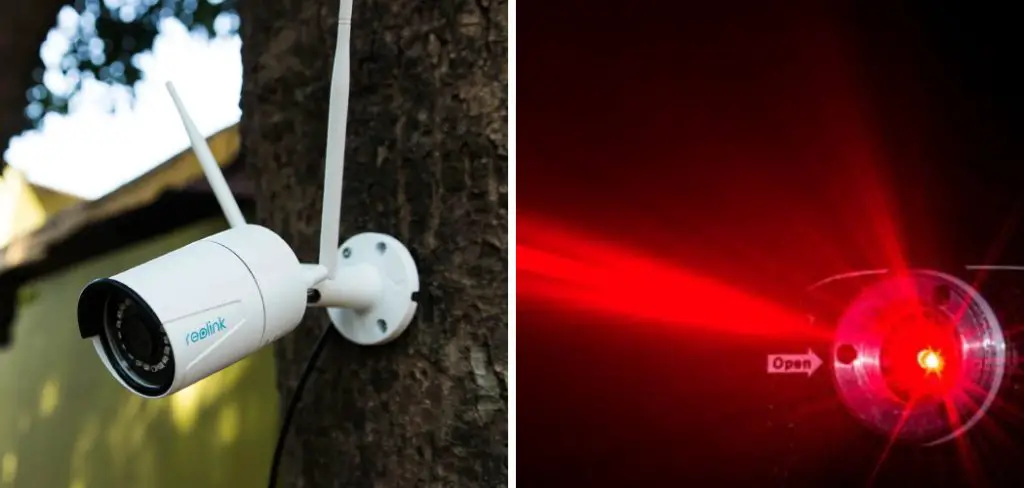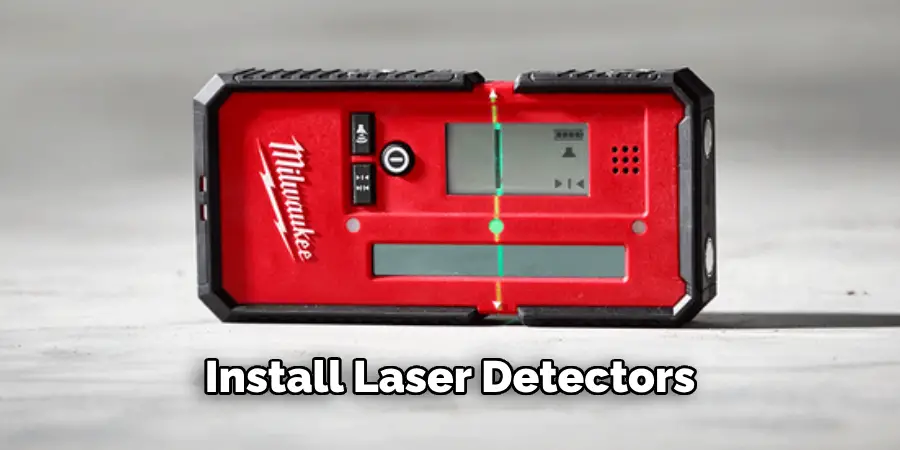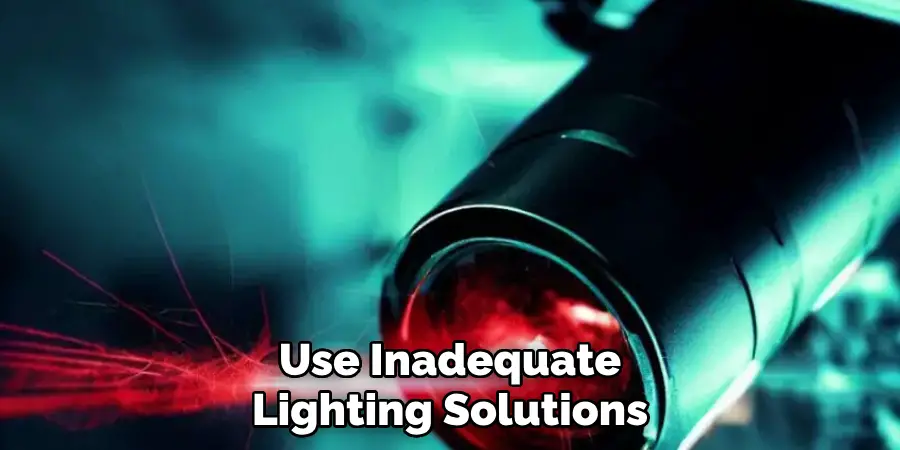Are you worried about the safety of your security cameras? Lasers can be a major threat to the functioning and longevity of your cameras. In this guide, we will discuss some tips on how to protect security cameras from lasers.
In an increasingly digital world, security cameras are pivotal in safeguarding properties and ensuring public safety. However, these devices are not immune to sabotage. One of the more sophisticated methods used by intruders or vandals involves using lasers to disable security cameras. Directing a laser at a camera’s lens can damage or temporarily blind the sensor, rendering the surveillance system ineffective. As such, it’s crucial to implement strategies and protective measures to ensure security cameras’ continuous operation and integrity against laser attacks.

This guide will provide practical tips and solutions to fortify your surveillance systems against such vulnerabilities.
What Will You Need?
To protect security cameras from lasers, you will need the following items:
- Laser detector or sensor
- Lens filter or cover
- Infrared illuminators
- Anti-laser film coating
Once you have these items ready, follow the steps below to enhance the security of your cameras.
10 Easy Steps on How to Protect Security Cameras From Lasers
Step 1: Identify Vulnerable Areas
First, thoroughly assess your property to identify areas where security cameras are most vulnerable to laser attacks. Focus on spots that are easily accessible to intruders or vandals, such as low-hanging cameras or those positioned near ground level.
Pay particular attention to areas with minimal lighting or shielding, as these can provide an easy line of sight for laser pointers. Additionally, consider the placement of cameras in relation to public access points, entrances, and exits; these locations are often prime targets. By pinpointing these vulnerable areas, you can plan for strategic enhancements and protective measures to mitigate the risk of laser interference.
Step 2: Install Laser Detectors or Sensors
Next, laser detectors or sensors around the identified vulnerable areas are installed. These devices are designed to detect the presence of laser beams and can trigger alarms or alerts when laser activity is detected. Position the detectors to cover the camera’s field of view and any potential angles from which a laser might be directed.
By incorporating these sensors into your security system, you can gain real-time notifications of laser threats and take immediate action to protect your cameras from damage. Ensure that the laser detectors are calibrated accurately to minimize false alarms and maintain optimal sensitivity.

Step 3: Use Lens Filters or Covers
Consider using specialized lens filters or covers to further protect your security cameras from lasers. These accessories can help to reduce the amount of laser light that reaches the camera sensor, thereby minimizing the risk of damage. Opt for filters that are designed specifically for blocking or absorbing laser wavelengths.
Additionally, weatherproof covers can provide an added layer of protection and shield the lens from potential laser exposure. By incorporating lens filters or covers, you enhance the durability and resilience of your cameras against laser-based sabotage.
Step 4: Implement Infrared Illuminators
Infrared illuminators are a valuable addition to your security camera setup, as they can help to obscure and counteract laser attacks. These devices emit infrared light, which is invisible to the human eye but can interfere with laser beams directed at the camera lens.
Position the infrared illuminators around your cameras to create a protective barrier that masks the lens from potential laser interference. Ensure that the illuminators are properly aligned and calibrated to cover the entire field of view of the camera, thereby maximizing their effectiveness in safeguarding your surveillance system.
Step 5: Apply Anti-Laser Film Coating
Applying an anti-laser film coating to your camera lenses offers an additional line of defense against laser attacks. This specialized film is designed to absorb or reflect laser light, preventing it from reaching and damaging the camera sensor.
Carefully apply the film to the camera lens, ensuring no bubbles or gaps could reduce its effectiveness. Regularly inspect and maintain the coating to ensure it remains intact and continues to provide optimal protection. Using anti-laser film adds an extra layer of security to your cameras, helping preserve their functionality and longevity.
Step 6: Utilize Protective Housing
Install protective housing for your security cameras to shield them from direct laser exposure. These housings can be made from materials that are resistant to laser penetration and can also include protective coatings or layers specifically designed to disperse laser light. Position the housings to cover the body and lens of the camera completely while allowing unobstructed surveillance capability.
Secure the housings firmly to prevent tampering or removal by intruders. By incorporating robust protective housing, you ensure that your cameras remain operational and safeguarded against potential laser attacks.
Step 7: Increase Lighting in Vulnerable Areas
Enhancing lighting around your security cameras can deter vandalism and reduce the effectiveness of laser attacks. Bright, well-lit environments make it more challenging for intruders to aim a laser accurately at the camera lens. Install additional lighting fixtures such as motion-activated lights or floodlights near vulnerable camera locations.
Ensure that these lighting solutions are strategically placed to eliminate shadows and cover all angles around the cameras. Increased visibility efforts not only deter potential laser use but also improve the overall effectiveness of your surveillance system by capturing clearer footage.

Step 8: Employ Geofencing Technology
Utilize geofencing technology to create virtual boundaries around your property and monitor for unauthorized activities. When integrated with your security system, geofencing can alert you to the presence of suspicious individuals or unusual movements near vulnerable camera areas.
Set up geofenced zones around your cameras and configure the system to trigger alarms, notifications, or even automated responses if laser activity is detected within these zones. By implementing geofencing, you add a proactive method of surveillance that can prevent potential laser attacks before they occur.
Step 9: Conduct Regular Maintenance and Inspections
Regular maintenance and inspections of your security cameras and protective measures are crucial to ensure long-term effectiveness against laser threats. Schedule periodic checks to assess the condition of laser detectors, lens filters, infrared illuminators, and any protective housings or film coatings.
Clean the camera lenses and replace any damaged or worn components promptly. By maintaining these protective systems, you can ensure that your surveillance setup remains optimally prepared to withstand laser interference and continues to provide reliable security coverage.
Step 10: Train Security Personnel
Finally, educate and train your security personnel on the potential risks posed by laser attacks and the measures in place to mitigate these threats. Provide training on recognizing signs of laser interference and the appropriate responses to such incidents. Ensure that your team is familiar with the functionality of laser detectors, the importance of lens filters, and the proper handling of protective housings and coatings. Well-informed security personnel are essential to maintaining the integrity of your surveillance system and ensuring swift action in the event of a laser-related incident.
By following these steps and implementing robust protective measures, you can effectively safeguard your security cameras against potential laser attacks.

5 Things You Should Avoid
1. Ignoring Regular Maintenance: Neglecting regular maintenance and inspections is a critical mistake when it comes to protecting your security cameras from laser attacks. Without routine checks, protective measures such as anti-laser film coatings, infrared illuminators, and lens covers can degrade over time, leaving your cameras vulnerable.
2. Improper Alignment of Protective Measures: Proper alignment and calibration of protective measures such as infrared illuminators and lens filters are crucial for their effectiveness in defending against lasers. They must be aligned correctly, ensuring that they cover the entire field of view of your camera. Failure to do so could leave gaps or blind spots where laser light can still reach the camera sensor.
3. Using Inadequate Lighting Solutions: Insufficient lighting around your security cameras can make them more susceptible to laser attacks. Bright, well-lit environments can make it more challenging for intruders to aim a laser accurately at the camera lens.
4. Poor Placement of Cameras and Protective Measures: Placing your security cameras and protective measures plays a crucial role in defending against laser attacks. Placing them too low or within easy reach of potential intruders can leave them vulnerable to tampering or damage.
5. Lack of Training for Security Personnel: Without proper training, your security personnel may not recognize the signs of laser interference or know how to respond appropriately. Educating and training them regularly on the potential risks and appropriate measures to take in case of a laser-related incident is essential.
Overall, by avoiding these mistakes and following the steps outlined above, you can effectively protect your security cameras from lasers and maintain their functionality for years to come.

Conclusion
In conclusion, how to protect security cameras from lasers requires a comprehensive and multi-faceted approach.
By implementing physical protective measures such as laser detectors, lens filters, and robust housings, you create a strong defense against direct laser interference. Enhancing the lighting around vulnerable areas and utilizing advanced technologies like geofencing further strengthens your surveillance system’s resilience. Regular maintenance and diligent training for security personnel ensure that the protective measures remain effective and that your team is prepared to respond swiftly to any incidents.
By following the recommended steps and avoiding common mistakes, you can safeguard your security cameras from laser attacks, ensuring reliable and continuous security coverage for your property.
